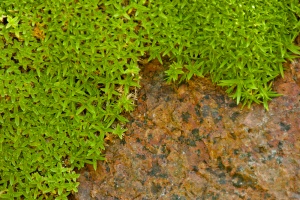Euphrasia species
| See Also | Botanical Monographs |
|---|
Eyebright (Euphrasia species) is used both topically and internally for a number of eye conditions. To explore the characteristics, medicinal uses and prescribing considerations of this herb in more detail, check out the references indicated.[1], [2]
Contents
Characteristics
AKA E. montana, E. rostkaviana, E. stricta
- Common Names: Eyebright
- Family: Scrophulariaceae
- Habitat: Euphrasia spp. is native to the U.K. and Europe and has been naturalized to Asia and North America from plains to subalpine. It is parasitic on grass roots.
- Parts Used: Leaf is preferred but the whole plant can be used when flowering (45% alcohol)
- Constituents: Iridoid glycosides, volatile oil, mannitol, sugar, tannins, bitter
- Medicinal Actions: astringent, cardiac tonic, decongestant, mucous membrane tonic, mucosal constrictor
Uses
Medicinal Uses:
Internal
- ophthalmias (catarrhal with redness, swelling, and visual disturbances), acute inflammation (conjunctivitis, blepharitis, inflammation of blood vessels), profuse lachrymal discharge with pus or watery mucous (acrid with heat and pain in frontal sinuses), eye trauma (bruise), eye fatigue, risk of corneal ulcers (herpes iritis)
- Other Conditions
- Fluent coryzas (profuse watery discharge, hoarseness, earache, cough, headache), bronchitis, gastric catarrh
Topical
- with fluent coryza, catarrhal ophthalmia with lots of discharge, hordeolums (styes)
- Other Conditions
- throat and oral irritations, inflammations of oral and throat mucosa
Homeopathically this remedy is referred to as Euphrasia.
Prescribing Considerations
The information provided is intended to augment the treatment from a naturopathic doctor or other trained medical professional. Although most herbs are generally safe, it is recommended that you avoid self-prescribing especially when there is an underlying ongoing medical condition, if you are on any prescription medications or if you are pregnant or breastfeeding.
Formulations and Preparation
- Tincture - 30-90 drops three times daily; infants 5 drops in 60-90mL water, 1 tsp every 15 minutes
- Fluid extract - 5-60 drops three times daily
- Powder - 5-30 grains
- Eyewash (decoction) - 3g herb (leaf)/100mL of water, boil 2-5 minutes; 1 tsp herb in 500mL of water, boil 10 minutes, steep 10 minutes, put in jar with very little air, refrigerate for up to 2 days
- Gastric catarrh - 1 cup of infusion on empty stomach on rising and at bedtime
- Gargle for throat and oral irritations; use decoction for inflammations of oral and throat mucosa
Safety
The safety and prescribing considerations for this herb include:[3], [4]
- Generally regarded as safe.
- Side-effects are not generally seen
- Drug-Herb Interactions are rare.
References
- ↑ Boon Heather, Smith Michael (2009) 55 Most Common Medicinal Herbs: The Complete Natural Medicine Guide Second Edition Institute of Naturopathic Education and Research, CCNM Toronto.
- ↑ Godfrey Anthony, Saunders Paul, Barlow Kerry, Gowan Matt (2011) Principles and Practices of Naturopathic Botanical Medicine, Advanced Botanical Medicine. V3 CCNM Press, Toronto.
- ↑ Stargrove Mitchell Bebell, Treasure Jonathan, McKee Dwight L (2008) Herb, Nutrient and Drug Interactions: Clinical Implications and Therapeutic Strategies.
- ↑ Brinker Francis (1997) Herbal Contraindications and Drug Interactions: Plus Herbal Adjuncts With Medicines, 4th Edition Eclectic Medical Publications.
